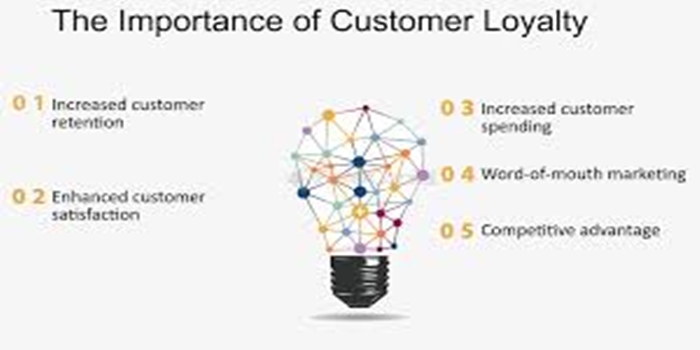In this article, we explained the meaning of loyalty impression, the characteristics, the examples, we also talked about the benefits.
Definition
The Loyalty Impression refers to the misconception that simply offering loyalty programs, like points or discounts, automatically creates genuine, long-term customer loyalty. Instead, it often leads to a surface-level engagement where customers switch brands when better deals emerge, driven by transactional motivations rather than genuine preference or brand devotion.
The Characteristics of Loyalty impression:
Transaction-based vs. Emotional Loyalty:
Many loyalty programs are built around rewards tied to purchases (points, discounts, tiers), creating a habit loop of discounted purchases rather than a deeper connection with the brand. True loyalty, however, is about more than just frequent purchases; it’s about a customer’s preference and emotional connection with the brand.
Measuring the Wrong Things:
Marketers often confuse frequency of purchase with loyalty, using metrics like redemption rates as indicators of program success. However, redemption rates can be inflated by promotions and urgency triggers, not by sustained engagement and genuine preference.
The focus on discounts and points can lead to a “race to the bottom” where companies compete on price, undermining the brand’s value proposition and potentially damaging long-term relationships with customers.
Customers may repeatedly purchase from a brand out of convenience or familiarity, but this doesn’t necessarily equate to true loyalty. They may readily switch to a competitor if a better deal or a more convenient option becomes available.
The Importance of Building Relationships:
To break free from the loyalty illusion, brands need to move beyond transactional rewards and focus on building genuine relationships with customers. This involves personalized experiences, meaningful connections, and non-price-related benefits.
Focusing on Emotional Connection:
Brands should strive to create experiences that resonate with customers on an emotional level, fostering a sense of belonging, trust, and appreciation.
The Four Dimensions of Loyalty:
Experts suggest that true loyalty is built on four dimensions: emotional connection, shared values, consistent experience, and mutual growth.
The Examples of Loyalty Impression:
The Impression of Rewards Driving Loyalty:
Misinterpretation:
Many companies believe that offering rewards in loyalty programs will cultivate long-term brand loyalty.
Reality:
Customers may simply be drawn to the discounts or rewards, and may switch brands when they see a more lucrative offer elsewhere.
A customer who regularly uses a cashback app to get a discount on groceries might not be genuinely loyal to that particular grocery store.
The Wrong Confidence in “Loyal” Spending:
Misinterpretation:
Some believe that customers who spend more on a brand they are “loyal” to are more likely to stay with that brand.
Reality:
Studies have shown that customers who spend more on brands they “love” are actually more likely to switch brands than those who spend less.
A customer who frequently purchases expensive products from a high-end retailer might switch to a competitor when they find a better deal or a product that better suits their needs.
The Typical Preference Distinction:
Misinterpretation:
Repetitive purchase behavior is often mistaken for genuine brand preference.
Reality:
Customers may simply have a habit of shopping at a particular store, but that doesn’t necessarily mean they are truly loyal to the brand.
A customer who always buys coffee at the same Starbucks location might do so out of habit, not because they are deeply attached to the brand.
The Importance of Emotional Connection:
Misinterpretation:
Loyalty programs often focus on financial rewards, neglecting the importance of emotional connection.
Reality:
Building a genuine emotional bond with customers is crucial for fostering lasting loyalty.
Example:
A company that provides personalized customer service, proactively addresses concerns, and builds a strong community around its brand is more likely to foster loyalty than a company that only offers financial incentives.
The Unsighted Following Issue:
Misinterpretation:
Some individuals may blindly follow leaders or brands, even when they have no personal connection or trust in them.
Reality:
This can lead to disappointment and disillusionment when the leader or brand fails to deliver.
A fan of a sports team might continue to support them even when they are performing poorly, simply because they have always been a fan.
The Benefits of Loyalty Impression:
Limitations of Loyalty Programs:
- Focus on transactions, not relationships:
Loyalty programs often prioritize discounts and points, which can make customers feel like they’re getting a deal rather than building a genuine connection with the brand.
- Can be easily switched:
Customers might join a loyalty program for the rewards, but if they find a better offer elsewhere, they’re likely to switch.
- May not lead to genuine loyalty:
While loyalty programs can increase repeat purchases, they don’t necessarily translate into brand advocacy or a strong emotional connection.
- Erode profit margins:
Offering discounts and rewards can cut into profit margins, especially if customers expect them as a standard practice.
Building True Loyalty:
- Focus on experience: Create a memorable and positive customer experience that goes beyond transactions.
- Build emotional connections: Connect with customers on a deeper level by understanding their needs and values.
- Personalize experiences: Tailor interactions and offers to individual customer preferences.
- Create a sense of community: Foster a sense of belonging and connection through loyalty programs and other initiatives.
- Recognize and reward commitment: Provide meaningful status and recognition for loyal customers.
Conclusion
The loyalty impression refers to the misconception that simply offering loyalty programs will automatically lead to genuine customer loyalty and increased business. While loyalty programs can offer some short-term benefits, they often fail to cultivate lasting emotional connections with customers. The “loyalty illusion” can be described as a focus on transactional rewards (like discounts or points) instead of building a strong brand experience that encourages repeat purchases and advocacy.
READ: The Role of Customer Experience in Building Brand Loyalty


